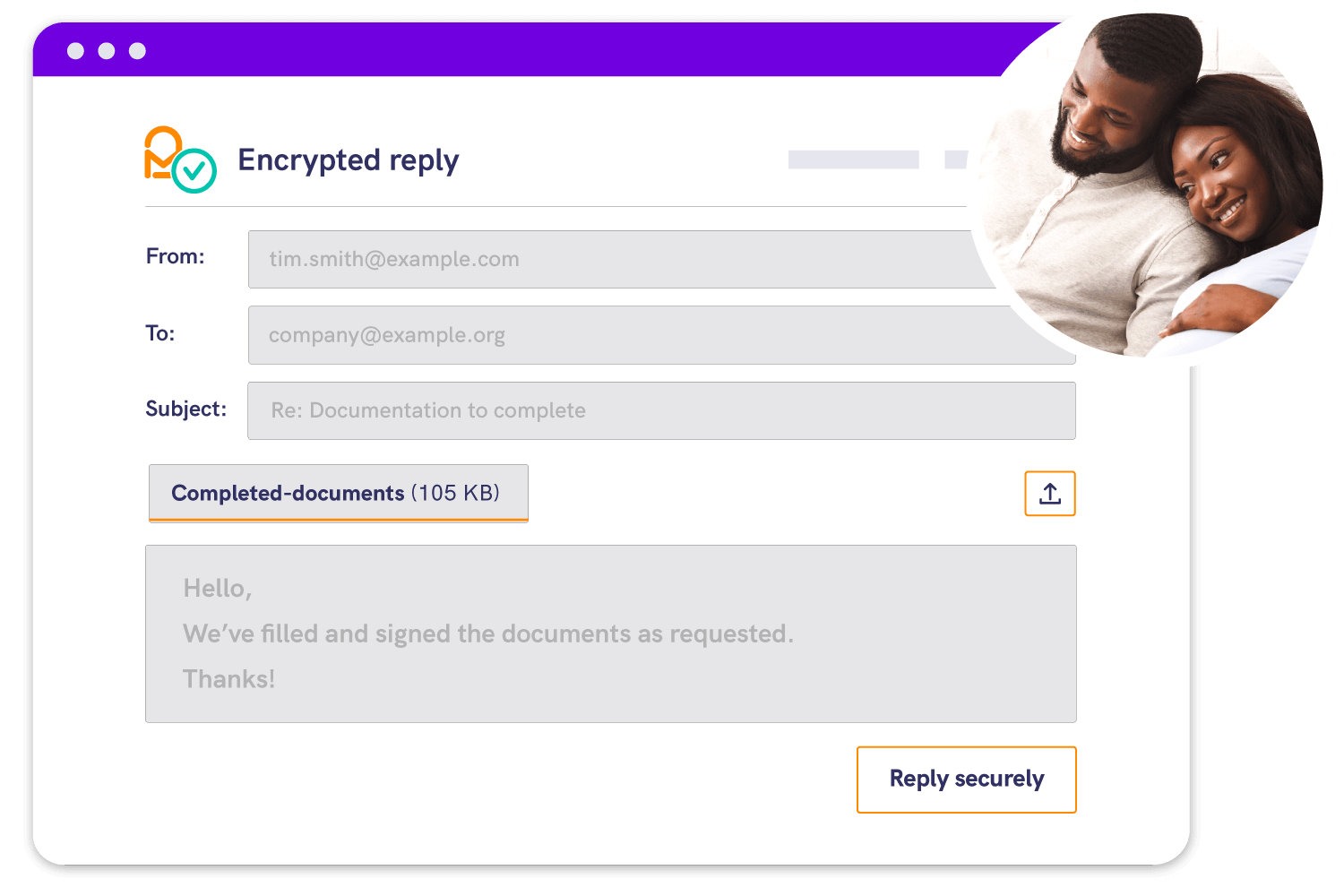Use Case: Hybrid Journeys
Deliver from your portal to the email inbox (securely)
Deliver documents by email, guide deeper interactions to your portal - enable secure hybrid customer journeys.

Engage customers in their channel of choice
Customer portals work when the content is worth logging in for. But for static or time-sensitive information, a login slows things down. Mailock blends email and portal delivery - sending documents to inboxes and guiding users to your portal when it matters.
-1-1.png?width=1080&height=700&name=Woman%20holding%20head%20in%20front%20of%20laptop%20stressed%20with%20digital%20fatigue%20coloured%20(1)-1-1.png)
Key statistics
%20(1).png?width=1500&height=900&name=Woman%20at%20home%20using%20portal%20on%20laptop%20(1)%20(1).png)
Low portal engagement
Although most customers have access to portals, regular use is rare. The average person manages 119+ online accounts - your portal is just one of many competing for attention.

Password fatigue
20% of people reset a password every week. Requiring logins for simple document delivery creates friction and reduces response rates.

Email still wins
60% of consumers say they prefer to receive important information by email. It’s where they’re already active - and where they’ll respond.
Deliver the right content, in the right channel
Let your customers receive, open, and respond securely - then guide them to your portal when needed. Mailock makes hybrid digital journeys seamless.





Fully compliant
Meet FCA and ICO requirements to encrypt data and record proof of delivery.
High response rates
Reach inboxes directly. Mailock achieves average open rates over 80%.
Managed service
Choose our hosted cloud service or run Mailock on-premises with our support.
Easy to use
Excellent service as always. Very easy to use. Well done Beyond Encryption!

Kim
Mailock recipient
Excellent service
My query was dealt with efficiently & promptly. You were very patient!

Clarissa
Mailock recipient
Safe & secure
Fast - and good to know my details are safe. Easy for me to work out.

James
Mailock recipient
Simple setup
I'm no technical wizard, but setting it up was very easy for me.
Chris
Mailock recipient
Used it for years
Been using this for years- if ever I have an issue it's solved quickly and efficiently.

Heather
Mailock recipient
Peace of mind
It's reassuring to know that no one else can access my information.

Charlie
Mailock recipient
Product Info
Explore Mailock

Pro
For regulated teams and professionals
Protect sensitive emails with advanced tools for encryption, authentication, and message control in Outlook or web.
.png?width=900&height=525&name=Customer%20service%20agent%20smiling%20in%20office%20with%20colleagues%20(1).png)
Enterprise
For organisation-wide protection
Apply policy-based encryption and recipient authentication across your entire mail flow with our secure gateway.

Automated
For secure high-volume delivery
Send thousands of secure, authenticated emails automatically using rule-based triggers and system integrations.

Questions?
Talk to us
Book a demo with our team to see Mailock in action and get your questions answered.
Related Content
Digital Experiences for All: How Unum Supports the Modern Workforce
How Unum creates digital experiences tailored for diverse user needs, integrating data insights, personalisation, and AI to support the modern workforce...
Bridging the Digital Divide: How Virgin Money is Tackling Exclusion
Virgin Money bridges the UK's digital divide through inclusive service design, community outreach, and national partnerships, providing vital digital access...